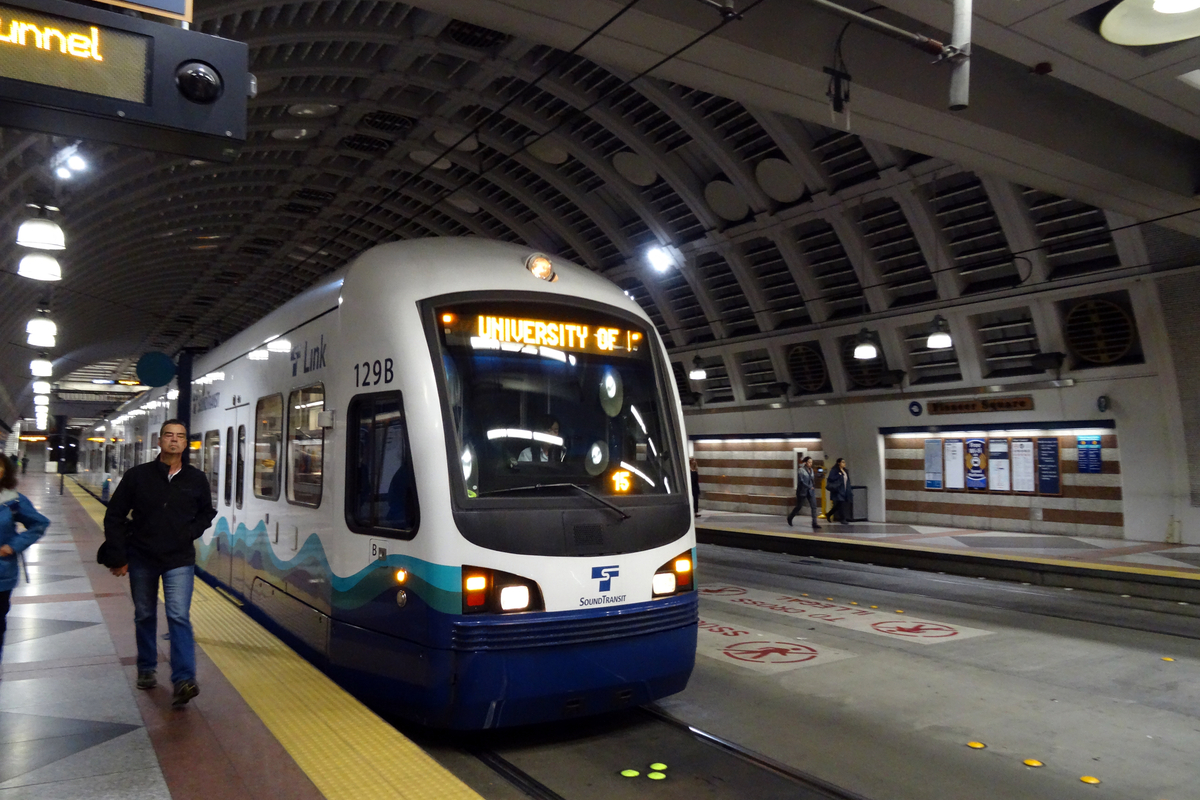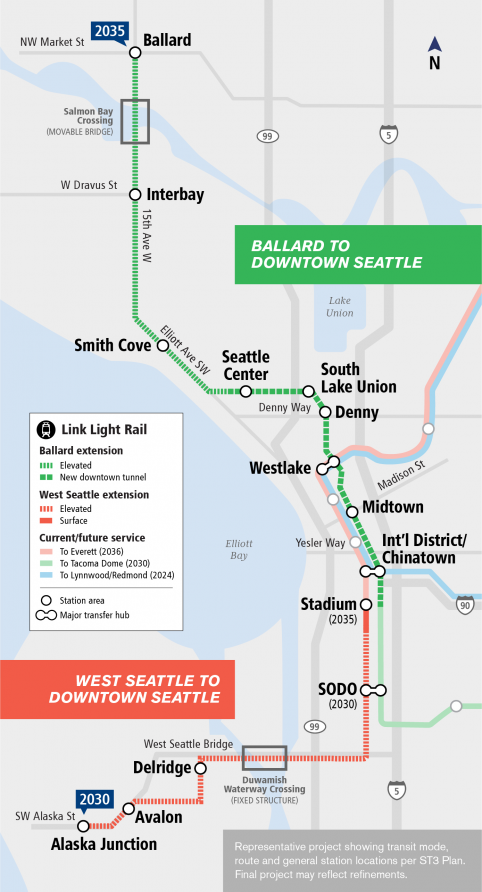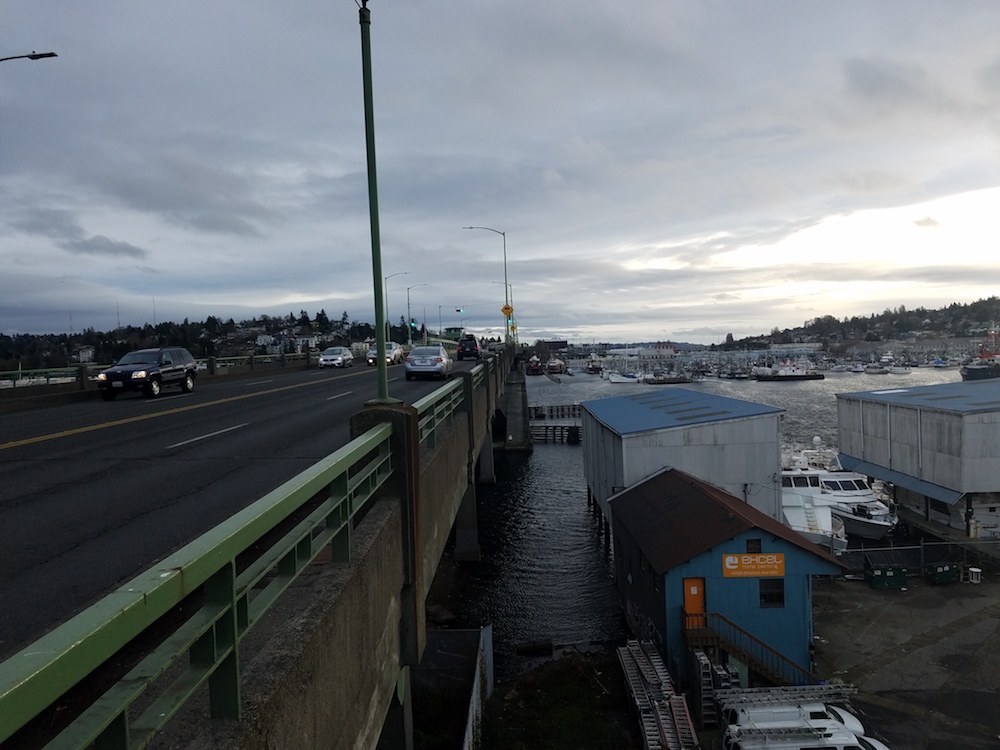Connecting state and local government leaders
The Emerald City and its new mayor are trying to expedite new transit projects on a timeline where there's little room for multi-jurisdictional and stakeholder error.
SEATTLE — What can be done to expedite planning and construction of an ambitious voter-approved light-rail transit expansion in the Pacific Northwest’s most populous city? City leaders in Seattle, regional transit officials and local stakeholders are gearing up to exercise their multi-jurisdictional collaborative muscles in order to deliver a handful of complicated infrastructure projects on time and, as many hope, ahead of schedule.
Last week, Seattle’s new mayor, Jenny Durkan, signed an agreement with the Sound Transit Board of Directors to expedite project development phases and improve agency coordination to plan, design and construct voter-approved Link light-rail projects within the city. The agreement sets an 18-month timeline to select preferred alignments for light-rail expansions to West Seattle and Ballard.
“As both Mayor and a member of the Sound Transit Board, I will work to cut red tape to provide faster, more reliable transit service to neighborhoods sooner,” Durkan said in a statement released Wednesday. “By working closely with key members of our community, region, and the Sound Transit Board, we will be able to make public transit more convenient and accessible to those who visit or live and work in and around Seattle.”
The agreement calls for the Seattle Department of Transportation and Sound Transit to have a “designated representative” to be a single point of contact between the agencies, Seattle Transit Blog reported. Sound Transit has looked at ways to streamline its project management processes to deliver light-rail extensions on faster timelines. Now it’s time to put those efforts to the test.
“It’s time to go to work,” Andres Mantilla, Durkan’s external relations director, said on Thursday during opening remarks at a transportation-focused public meeting at Seattle City Hall organized by the Transportation Choices Coalition, a non-profit group that supported last year’s successful Sound Transit 3 ballot initiative.
“We’re in this together,” Mike Harbour, Sound Transit’s deputy chief executive officer, said during his remarks Thursday night. “What I really want to get across is that we aren’t going to be successful if we don’t work together.”

All stakeholders involved in the light-rail planning, design, permitting and construction phases need to prioritize their shared goals, Harbour said, not just what’s going to work best for their particular agency—including his own.
Beyond having “empathy” for other partners involved in the process, Harbour said, “early engagement is key” to identify and address potential headaches before they have a chance to strangle the process with delays. That’s why the next 18 months will be critically important for all stakeholders to compromise on the key elements for the preferred alignment and move toward final design and construction.
While the commitment from the new mayor and transit agency is an important one, the “Seattle process”—as the local flavor of sluggish political procedure and deliberative civic discussion is sometimes called—can be a formidable force to reckon with. That process, where “[c]rucial laws and amendments get mired in bureaucracy and take forever to crawl out in the annals of government offices,” previously stymied other projects and initiatives in Seattle, a city that’s seen tremendous growth in recent years. That growth has put increasing demands on housing and the local transportation network, which is constrained by the topographical realities of Seattle’s local geography.
An earlier generation of Seattle voters, in 1968 and 1970, rejected ballot initiatives authorizing the construction of a rapid transit system that would have been built mostly with federal funding. (The funding Seattle refused was used to build Atlanta’s MARTA system instead.)
Eventually, the region came together in the 1990s to create Sound Transit, which faced early setbacks before building the first light-rail segment, Central Link, which opened in 2009.
The stakes are high with the ST3 expansion within the city: Unexpected conflict, litigation and delays during the planning, environmental review, design and permitting phases could cascade into other problems and balloon costs when it comes time to start construction. And uncertainty involving federal funding contributions for local transit projects in the future doesn’t help matters.
What’s Planned
Sound Transit already has a handful of voter-approved expansions underway, including projects under construction and others elsewhere in the planning and design phases. Those expansions include extending the Link light-rail service northward from the University of Washington to three new stations opening in 2021 and to Lynnwood in Snohomish County in 2024; eastward from Seattle across Lake Washington to the cities of Mercer Island, Bellevue and Redmond in two phases opening in 2023 and 2024; and south to Federal Way in 2024.
In the $54 billion Sound Transit 3 measure that passed in November, voters in a regional taxing district authorized another future round of Link expansions, including connections southward to Tacoma in 2030, northward to Everett in 2036 and eastward to Issaquah in 2041.
The Link light-rail network will also expand within city of Seattle, where trains currently run along a single line connecting the University of Washington and Capitol Hill neighborhood to the Downtown Seattle Transit Tunnel, Seattle’s Beacon Hill and Rainier Valley areas and points southward toward SeaTac Airport.

Thet “ST3” expansion in Seattle would bring light-rail service to West Seattle and Ballard, areas of the city currently without Link light-rail access: A high-level crossing would be built over the Duwamish Waterway and connect downtown to West Seattle’s Alaska Junction area. A new downtown subway tunnel would also be dug to the booming Denny Triangle and South Lake Union areas, Seattle Center and bring light-rail service to the Ballard neighborhood via a mostly elevated alignment through Interbay.
“There’s nothing easier than building a tunnel underneath downtown Seattle,” Harbour joked to the audience on Thursday, a reference to the long-delayed State Route 99 deep-bore tunnel currently being built by the Washington state government.
By some ridership estimates, Link’s future Ballard extension, when finished and in revenue service, could end up being among the nation’s most-used transit lines once all the ST3 projects are built and in operation, with downtown Seattle at the heart of the network.
Sound Transit’s ST3 timeline currently has Link service to West Seattle starting in 2030 and Ballard in 2035. Settling early on an preferred alignment for those extensions would avoid bigger headaches down the road.
“During the ST3 campaign I repeatedly pointed out that the timelines could be shortened if local jurisdictions and Sound Transit work together,” King County Executive Dow Constantine, who sits on the Sound Transit board, said in a statement last week when the agreement with the Durkan administration was announced. “Today, for West Seattle and Ballard, Seattle is a big step closer to making that happen, fulfilling my promise and showing the way for other cities.”
There are still some big questions to resolve, most notably, how the Link alignment to Ballard should cross Salmon Bay, a relatively narrow waterway but one of vital importance for the local maritime industry as part of the Lake Washington Ship Canal.

Harbour emphasized that Sound Transit recognizes the complexity of that crossing and is very much open to discussing the agency’s options.
A light-rail tunnel under Salmon Bay would be more expensive to build compared to a high-level drawbridge, which would need to periodically open for passing ships and create operational challenges when trying to maintain timely transit service.
A high-level crossing of Salmon Bay could limit possible future Link extensions eastward to the University District, a crosstown connection many Seattle transit advocates have hoped for. Also, if a bridge is built over Salmon Bay adjacent to the existing Ballard Bridge, the Sound Transit light-rail construction project offers an opportunity to build a new seismically resilient crossing of the Lake Washington Ship Canal. That new crossing could be an important regional asset needed to help in the recovery following the Pacific Northwest’s next major earthquake, much like how the transit-priority Tilikum Crossing in Portland, Oregon was designed to survive the next major seismic event and serve as a recovery lifeline over the Willamette River.
While there are plenty of details to discuss and conflicts to resolve in the coming months—and years—there’s no way around those challenges without stakeholders working together.
“Collaboration is the key,” Harbour said.
“The good news is that we’re going to deliver ST3 in less than 375 years,” he continued with another joke, referring to an estimate mentioned from an earlier presentation for the time it would take Seattle to finish building sidewalks along all its streets at its current pace and funding levels.
Michael Grass is Executive Editor of Government Executive’s Route Fifty and is based in Seattle.

NEXT STORY: NIST wants to consolidate its e-commerce in a Salesforce cloud




